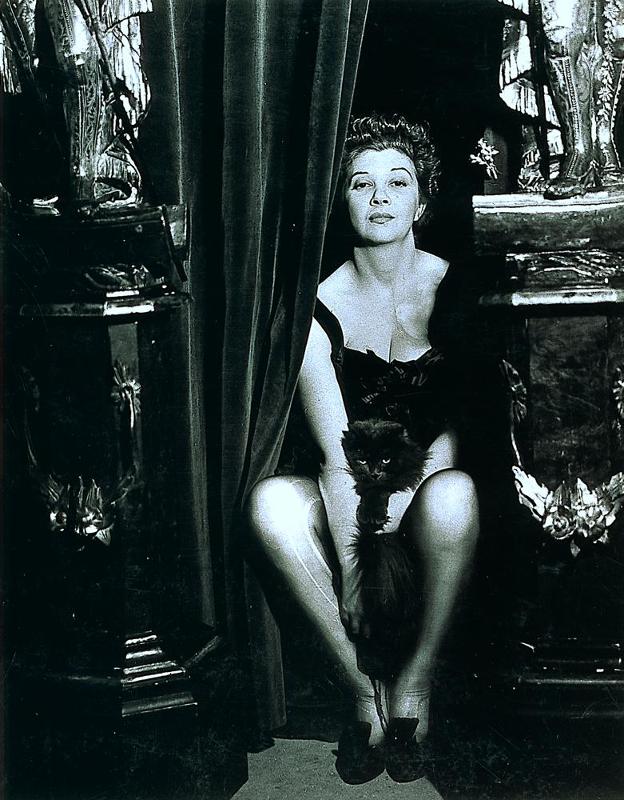From enigmatic montages to portrayals of war and fashion: Surrealism expert Patricia Allmer on the question of why photography was such a crucial medium for this particular movement.
Photography arguably flourished more in surrealism and its legacies than in any other avant-garde movement, and women photographers were at the forefront of surrealist experimentalism with, and development of, the medium.
Surrealist photography’s stylistic, international, and historical range is evident in the exhibition Fantastic Women, from the uncanniness of the Mexican Lola Álvarez Bravo’s flâneuresque images, to the stagings and self-portrayals of the French artists Claude Cahun and Marcel Moore, the photomontages of Dora Maar, or US-American Lee Miller’s war and fashion photography, all expressing radically differing manifestations of Surrealist aesthetics.
Coincidences lead to unexpected results
Photography’s combination of automatism and agency – the mechanical and chemical actions of light-writing performed by the momentary fissure between pressing the shutter and light imprinting on and transforming the film, and later the transformational opportunities of the processes of development and printing – are all crucial for the medium’s potentialities for surrealist art. In the fractional moments separating these actions, in which human agency coincides with the camera’s automatism, lies the possibility for creativity to happen unconsciously, with unintended consequences.

This potential for productive and fortuitous accidents is a key driver of the surrealist interest in photography, which is clear from Lee Miller and Man Ray’s co-creation of the solarised image in the moment when Miller accidentally turned on the light-switch of the dark room while Ray was developing photographs.
Photography enables access to the subconscious
It allowed the recording of chance encounters in the everyday, revealing unconscious realities in which the discarded, damaged, or neglected took on new lives and meanings. This can be seen in Miller’s wartime depiction of a trashed Remington typewriter (1940), a random casualty of the Blitz, or Álvarez Bravo’s jarring entanglement in “Bird’s Eye View” (1950s) of a mannequin and the shell of a car, precisely the kind of random and poetic juxtaposition celebrated by the Surrealists, and which they found embodied in the French poet Comte de Lautréamont’s line from his book Songs of Maldoror (1869) describing “the chance encounter between a sewing machine and an umbrella on an operating table”.

In the photographers’ works these accidents often rupture the smooth surfaces of ideologies and traditions, dismantling links and connections between the everyday and the violence of patriarchy. Claude Cahun notes in her 1936 essay ‘Beware of Domestic Objects’: “(…) all around us present-day reality is cracking at the seams (…).” These shatterings of tradition erupt in photographs like the Czech photographer Emila Medková’s tracings of cracks, from fractured glass surfaces to the cracks in walls, mutating into strange faces and landscapes. Medková’s “Upravíme váš účes (We’ll Adjust Your Hairstyle)” (c.1950/55) transforms a shattered shop window into a scene of dynamic meanings.
All around us present-day reality is cracking at the seams (…)
With the cracked slogan, referring to women’s grooming procedures, Medková humorously plays on the expression ‘hairline cracks’ (in Czech, vlasové trhliny). The slogan also implies darker political messages of ‘adjustment’ in relation to femininity as flawless and objectified image manipulated by consumerism. This image is set here in the specific context of communist authoritarianism in Czechoslovakia at the time—a regime opposing both women’s rights and avant-garde artists. The intimately personal becomes political, reflecting back upon the photographer herself, her reflection in the window distorted, spreading to the edges of its frame, Medková’s head is replaced by the randomly proliferating cracks resembling hair gone wild.
The intimately personal becomes political
Similarly, but in a different political context, Miller’s “Untitled (Exploding Hand)” (c.1931), taken at the Guerlain Parfumerie in Paris, explores commercialised and commodified feminine beauty. The female hand points to the scratches and fissures on the mirroring glass of the shop door, just as Caravaggio’s Thomas inserts his fingers into Christ’s wound. The scratches on the glass door insert imperfection into that which represents commercialised femininity disrupting the flawlessness of the glass surface.

We can trace a different kind of productive accidental damage in Dora Maar’s 1936 photograph of the artist Leonor Fini. This photograph belongs to a long tradition within Surrealism of women photographing each other – a political task of recording each other as artists to intervene in their recurring construction, by both male artists and art history, as secondary to their male colleagues and partners.
Dora Maar mocks the objectification of women
In the photograph, the cat between Fini’s legs clearly connotes a ‘pussy’ (‘la chatte’), mocking the conventional sexualised and objectified constructions of women. Two conspicuous tears in her right stocking inscribe, like a memento mori, the fracturing of the flawless feminine appearance demanded by patriarchy. These explorations of cracks and tears demonstrate the possibilities photography held for surrealism in its desire to fracture conventional realities, opening spaces for political critique and the exploration of alternative worlds and identities. Photography’s ability simultaneously to represent and question reality furthermore offered women artists, in particular, new instruments with which to challenge conventional constructions of femininity.

Dora Maar, Léonor Fini, 1936 © Jacques Faujour - Centre Pompidou, MNAM-CCI /Dist. RMN-GP © Adagp, Paris, Image via www.centrepompidou.fr









